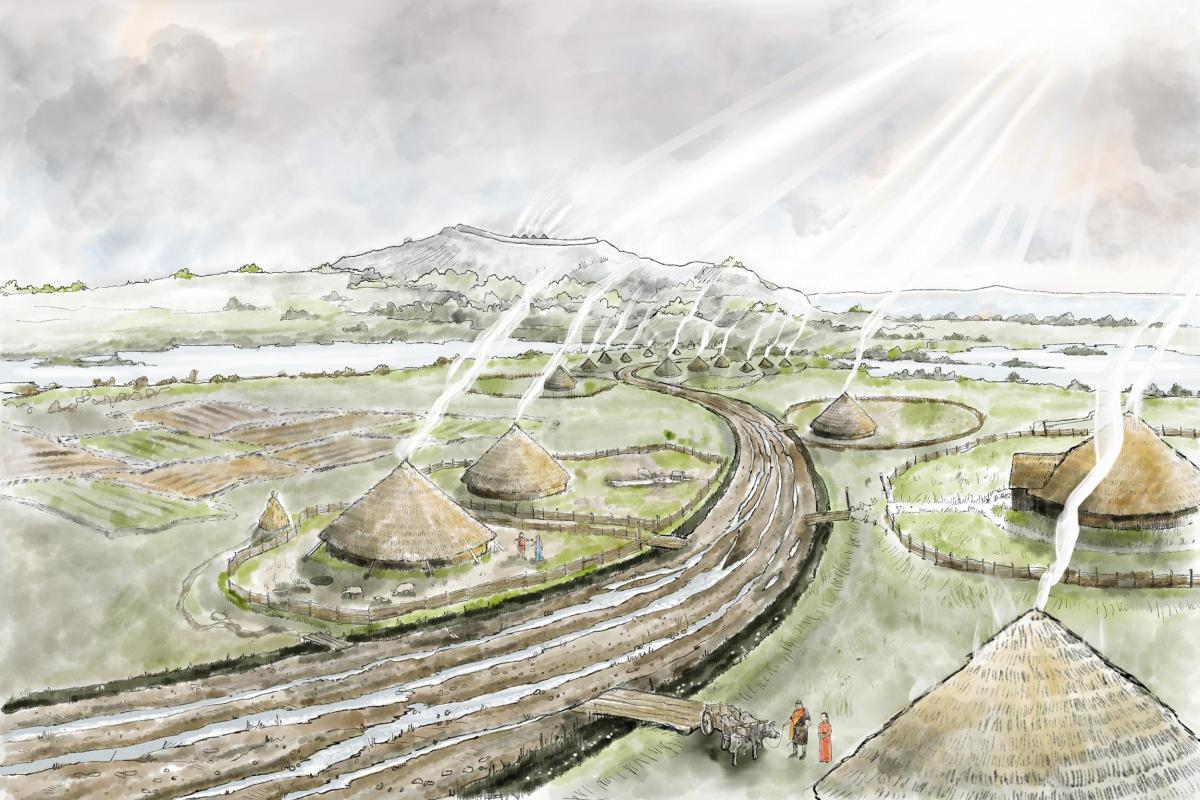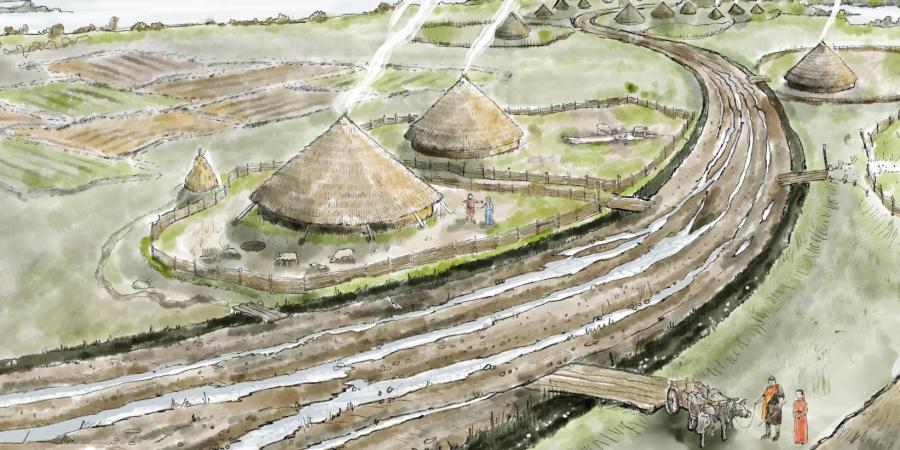Early Iron Age
In this area of the site, the earliest phase of features is a line of pits, over 200 m long. The line of pits runs from the north-west to the south-east and may have been used to mark out boundaries of land ownership or agricultural areas. Although there is very little evidence to help with dating the pit, just one piece of pottery, it is thought to be Iron Age (800BC – 43AD). Similar pit alignments in the region have also been dated to the Iron Age.

Mid-late Iron Age
As more sophisticated methods of carving out agricultural land developed, more permanent places to live were needed. So far, two roundhouses have been revealed.
Roundhouses range in date from the Bronze Age, Iron Age and Roman period, and are identified from their circular shape and round gullies. They would have had a strong pointed thatched roof, and the walls could be made from different types of materials such as compacted mud or stone.
The roundhouses at Coleshill are likely to be from the Iron Age, as the pits were, but a bit later. It is likely the roundhouses were occupied all year round. The roundhouses are surrounded by a large ditch, connected to further ditches.
As the settlement grew, the earlier pits were no longer sufficient and were replaced by a larger ditch The ditch follows the same direction as the former pits, but has spurs coming off it to divide the land into field systems, similar to what you may see in the countryside today. After digging down through the ditch, a distinctive “tipping” fill was revealed. Tipping fills are created by “tipping” the dirt and other material you remove while digging a hole into a different area. The tipping fill in this case is made up of stones that have been in a fire. The stones have a dark rosy bloom or a very deep bruised red colour with cracks, distinctive of stones that have been heated. The material also contained other things affected by heat such as charcoal. Similar types of material were found in the foundation of the roundhouse as well as the ditch. This type of fill is deliberate and made by humans, so finding two similar deposits in two nearby features suggests that they were made around the same time.
